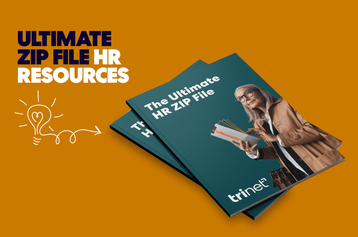
The 2007-2009 Great Recession is fresh in the public consciousness as another potential economic downturn looms over the market. But while it’s important to learn from the past, HR leaders and small business owners can also benefit from differentiating between now and then — and adjust strategies accordingly. Today, employees and organizations benefit from remote work and asynchronous communication. Even current struggles, such as the labor shortage and supply chain disruptions, are different pressures than the financial crash and housing bubble of the Great Recession. That isn’t to say another recession won’t be a tough time for everyone involved. However, unlike in 2007, most industries need workers more than ever. For most HR leaders this means less pressure related to layoffs and more in reducing company spend. It also entails increasing workplace digitization and automation, offering employee-centric benefits, and streamlining hiring practices.
What's likely causing the recession in 2022?
We know that since the pandemic, the economy has been rocky. But ongoing supply chain disruptions, inflation, the labor shortage, regional lockdowns, and international conflict have all changed business as we know it. And as the world becomes more uncertain, consumers are spending less, which eventually spirals into a recession. A recession may last 2 or 5 years, maybe more. For HR professionals, it’s time to get creative and strategic.
Dealing with a recession and labor shortage
In the economic crisis and recession of 2009, 55% of HR leaders expanded their layoffs, and 41% started downsizing. But this isn't 2009. The Great Resignation might slow down, but the United States still suffers from a critical labor deficit. According to the Brookings Institute, 1 million migrant workers could fill the gaps in the retail and food industry alone. This time around, business leadership will have a tough time managing reduced consumer spending and lack of available talent. For HR professionals, this translates into prioritizing employee engagement and retention. While some firms may face potential layoffs — particularly in the technology industry — many other workplaces still struggle to keep their most valuable employees.
The obvious strategy: Cutting business spending and costs
Economic downturns almost always shift into reducing business spending, often resulting in hiring freezes, layoffs, and discontinuing relationships with expensive vendors. Yet shifting HR practices can both reduce costs and boost productivity. For example, according to a Salesforce study, 18% of respondents said that automating HR practices provides the highest ROI, and 46% reported that they managed to cut costs by 11-30% through process automation. During a recession, the HR team can optimize the long-term budget by reevaluating their processes, refining the hiring process, and detecting manual operations that can be removed, automated, or shifted into an employee self-service module.
6 best practices for HR leadership in a recession
Business leaders and HR executives often need to be more strategic with resources and communication during economic slowdowns. Here are 6 best practices to reduce friction and keep employee engagement up:
1. Engage in honest and transparent communication with staff members
First and foremost, it's vital to be upfront and transparent with all employees about HR decisions. Honesty, especially during a tough time, can build trust and reduce long-term reputational damage. At the same time, clear communication can boost employee morale. Some tips for ensuring your workplace communication is transparent are to:
- Provide a direct line of communication with all employees.
- Be consistent with how often you give feedback or announce important information.
- Give a clear and concise reason for certain changes.
- Explain why you can’t share certain information.
- Ask for feedback and ideas on changes or challenges.
2. Craft specific benefits packages for employees
One of the biggest changes HR professionals tend to make during a downturn is a reduced or lean employee benefits package.
What matters more is what you offer, not necessarily how much.
Current and new employees may prefer to reduce benefits spending in return for cash. HR leadership will also need to determine which benefits make the most sense for the budget while retaining the competitive advantage in hiring and retaining talented employees. A recession may result in a leaner program than what was offered previously, but that’s okay. What matters more is what you offer, not necessarily how much.
3. Retain top employees and reduce worker turnover
Ensuring that your company offers competitive employee benefits is important, but it isn't the only consideration when it comes to retention. A recent McKinsey report found that employee retention hinges on several factors — chief among them being meaningful work, workplace flexibility, and adequate career development opportunities. To reduce employee turnover, the HR team should have a complete employee lifecycle journey that includes support from talent acquisition to professional development, promotion, and eventually termination. Keep in mind that outside of health insurance, flexible work programs and career development tools can be relatively low-cost while being highly effective.
4. Offer flexible schedules, remote work, and PTO
It's no secret that workers enjoy setting their own schedules and working from home. It can be helpful to ensure employees retain a high degree of flexibility and control over their work. This can include implementing new HR policies around remote work or enforcing PTO leave.
5. Improve productivity with automation and technology
In the case of a labor shortage or hiring freeze, it's important to remember that overworking your current employees can lead to burnout and high turnover. Rather than overload your valuable employees with new responsibilities, help them automate and streamline their current processes. This is especially true in the HR department, where professionals are overwhelmed with tedious paperwork and compliance considerations. Digitizing aspects of hiring, onboarding, and employee management can free up time for workers to work on higher-level tasks. What can’t be automated can still benefit from going online. For example, investing in online communication channels instead of leaning on a barrage of easily lost emails can improve efficiency and clarity. Employee self-service options, such as allowing employees to schedule their PTO days in an online calendar or submit feedback, benefit everyone. Not only does it make these tasks easier for the human resources team, but employees can also complete these tasks on their own time.
6. Lead your organization with a long-term vision
At the end of the day, the recession will eventually end. Your HR executive and their team should have a strategy for long-term employee engagement and talent acquisition. During these periods of slowdown, it can be helpful to recalibrate, remove redundancies, and prepare for growth.
What are resources for optimizing your HR management?
Let’s face it: Human resources management includes several different tasks and processes. And while many repetitive tasks can be automated or digitized, HR functions still revolve around people, meaning that a lot of the work will continue to be hands-on. But that doesn’t mean there aren’t resources to make HR a little easier for your team. If you’re looking to reduce turnover, we have a thorough employee retention checklist to help you keep hold of your top talent. But in the case where your organization is downsizing, can’t afford more full-time workers, or requires an extra pair of hands for a short-term project, our guide to managing independent contractors is the way to go. And what about automation? We have a guide for that, too. For HR managers who want to investigate HR savings through automation, you can calculate ROI with these formulas.
This communication is for informational purposes only; it is not legal, tax or accounting advice; and is not an offer to sell, buy or procure insurance.
This post may contain hyperlinks to websites operated by parties other than TriNet. Such hyperlinks are provided for reference only. TriNet does not control such web sites and is not responsible for their content. Inclusion of such hyperlinks on TriNet.com does not necessarily imply any endorsement of the material on such websites or association with their operators.






